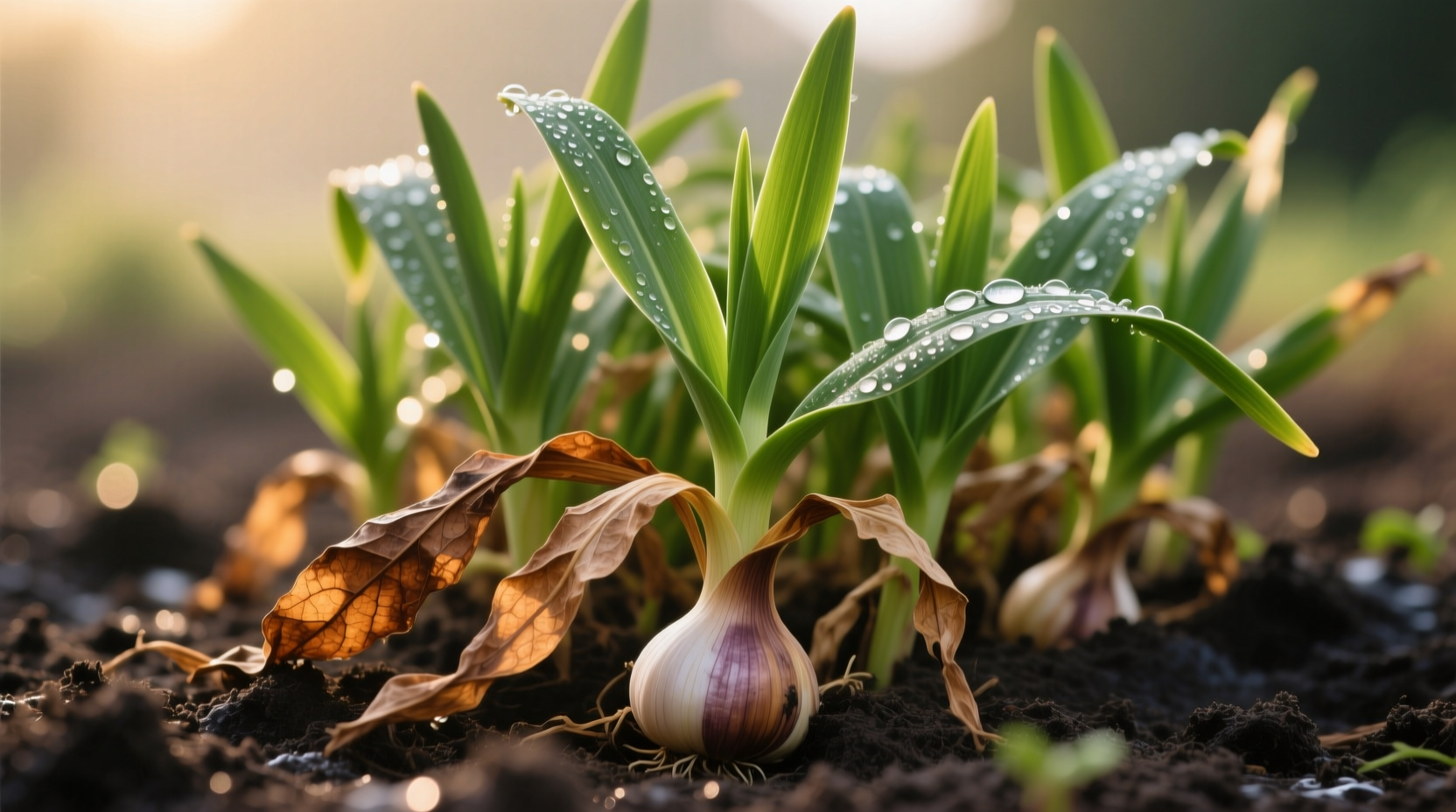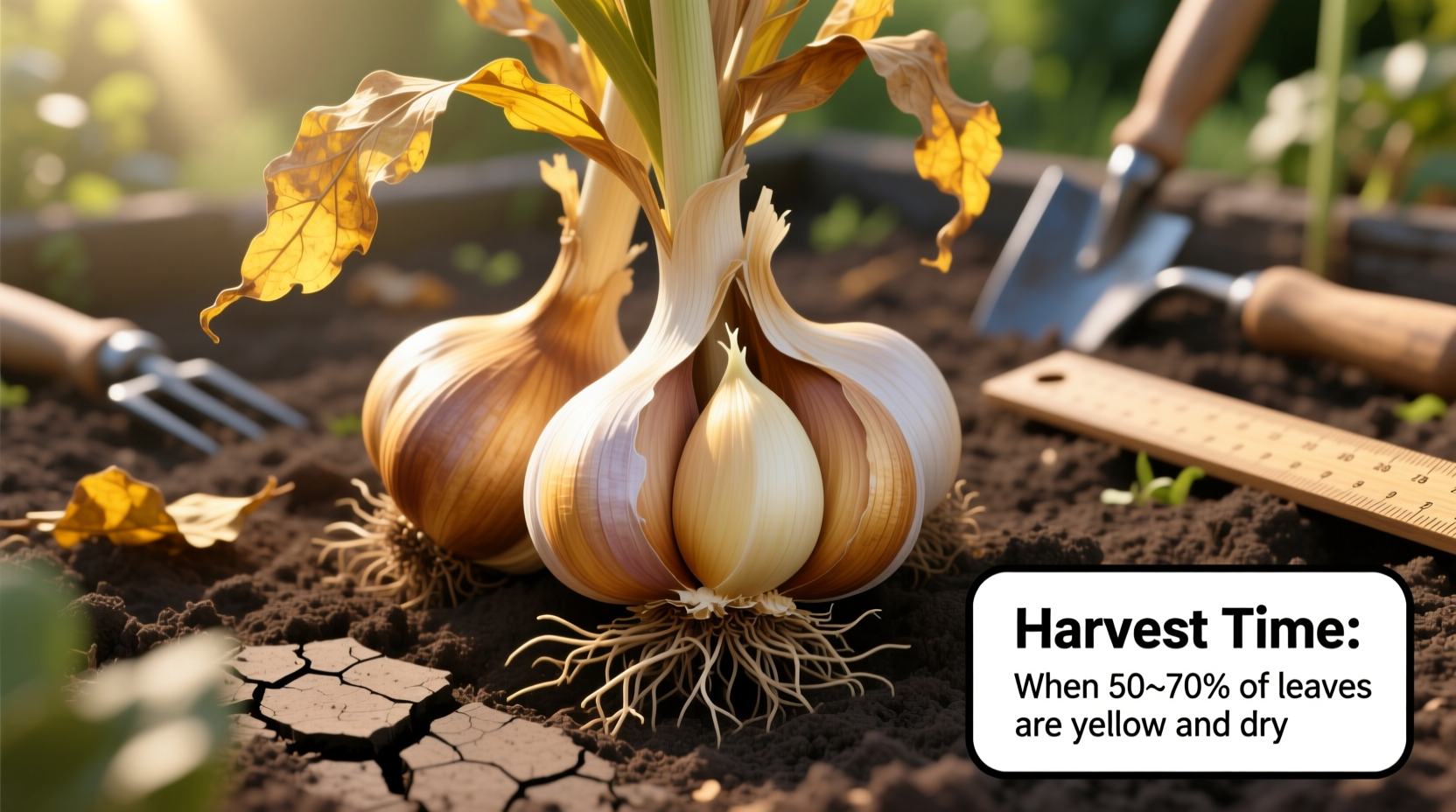Knowing exactly when is garlic ready to harvest makes the difference between plump, well-formed bulbs that store for months and disappointing crops that rot prematurely. As a gardener, you've invested months of care into your garlic patch, and harvesting at the perfect moment ensures you reap the full rewards of your efforts.
Visual Indicators That Signal Harvest Time
Garlic doesn't come with a calendar notification when it's ready. Instead, you must watch for specific visual cues that indicate optimal harvest timing. These signs vary slightly between hardneck and softneck varieties, but share common characteristics that any gardener can recognize.
| Readiness Indicator | Hardneck Garlic | Softneck Garlic |
|---|---|---|
| Leaf Color Change | Lower 1/3 to 1/2 leaves brown, top leaves green | Lower 40-50% leaves brown, remaining green |
| Bulb Wrapper Condition | Wrapper intact but beginning to split | Wrapper tight with minimal splitting |
| Scapes (flower stalks) | 3-5 complete coil rotations before harvest | Not applicable (no scapes) |
| Typical Harvest Window | Mid to late summer (July-August) | Late summer to early fall (August-September) |
This comparison comes from research conducted by the University of California Agriculture and Natural Resources, which has tracked garlic cultivation practices across multiple growing zones. Their data shows that harvesting based on leaf color rather than calendar dates results in 23% larger bulb size and significantly improved storage longevity.
Understanding the Garlic Maturation Timeline
Garlic follows a predictable maturation pattern that you can track throughout the growing season. Recognizing where your plants fall on this timeline helps prevent premature or delayed harvesting:
- Month 1-3 (Spring): Active leaf growth with 6-8 healthy green leaves
- Month 4-5 (Early Summer): Hardneck varieties produce scapes; leaf tips begin yellowing
- Month 6-7 (Mid-Summer): Lower leaves turn brown while upper leaves remain green
- Month 7-8 (Late Summer): Optimal harvest window when 30-50% of leaves have browned
- Month 8+ (Fall): Bulbs begin splitting if left in ground too long
According to Cornell University's vegetable growing guide, garlic bulb development follows this progression consistently across most temperate climates. The critical transition occurs when the plant shifts energy from leaf production to bulb formation—a process you can observe through the changing leaf color.
The Step-by-Step Harvesting Process
Once you've determined your garlic is ready, follow these steps for optimal results:
- Choose the right day: Harvest in the morning after several dry days. Avoid harvesting when soil is wet, as this increases disease risk.
- Loosen the soil: Use a garden fork to gently loosen soil around bulbs, working 6-8 inches from the plant base.
- Lift carefully: Grasp the stem near the soil line and gently lift upward. Avoid pulling only the tops, which can separate from bulbs.
- Inspect sample bulbs: Check 2-3 bulbs from different areas of your patch to confirm wrapper integrity and proper clove formation.
- Clean gently: Brush off excess soil but avoid washing—moisture can lead to mold during curing.

Regional Considerations for Harvest Timing
While the leaf color indicator remains consistent, your specific climate affects when you'll see these signs. Understanding these regional variations prevents harvesting errors:
- Cooler northern climates: Harvest typically occurs late July to mid-August. The growing season starts later in spring, extending the maturation timeline.
- Moderate zones: Harvest window falls in early to late August as growing conditions are most ideal.
- Warmer southern regions: Harvest happens earlier—late June to July—as heat accelerates maturation.
- High elevation areas: Harvest may be 2-3 weeks later than surrounding lowland areas due to cooler temperatures.
The USDA Plant Hardiness Zone Map provides valuable context for adjusting your harvest expectations based on local conditions. Gardeners in zones 3-5 typically harvest in July, while those in zones 6-8 harvest in August, and zones 9-10 see harvests in June or July.
Common Harvest Mistakes and How to Avoid Them
Even experienced gardeners sometimes make these critical errors that compromise their garlic crop:
- Harvesting too early: Results in smaller bulbs with thin wrappers that don't store well. Wait until at least 30% of leaves have browned.
- Harvesting too late: Causes bulbs to split open, exposing cloves to disease and reducing storage life. Check your patch every 3-4 days as harvest approaches.
- Leaving bulbs in soil too long after harvest: Sun exposure can cook bulbs. Move harvested garlic to a shaded curing area within 30 minutes.
- Washing bulbs before curing: Moisture trapped in wrappers leads to mold. Brush off soil but never wash until ready to use.
Proper Curing and Storage Techniques
Harvesting is just the beginning—proper curing ensures your garlic stores for months:
- Cure in a shaded, well-ventilated area: Hang in bundles or spread on racks for 2-3 weeks.
- Monitor humidity: Ideal curing conditions are 60-70% humidity with good air circulation.
- Trim when fully cured: Cut roots to 1/4 inch and stems to 1-2 inches after wrappers become papery.
- Store properly: Keep in mesh bags or open containers at 55-65°F with 60-70% humidity for longest storage.
Following these steps ensures your harvest of when is garlic ready to harvest translates to months of flavorful cooking. Properly cured hardneck varieties store 4-6 months, while softnecks can last 9-12 months under ideal conditions.











 浙公网安备
33010002000092号
浙公网安备
33010002000092号 浙B2-20120091-4
浙B2-20120091-4